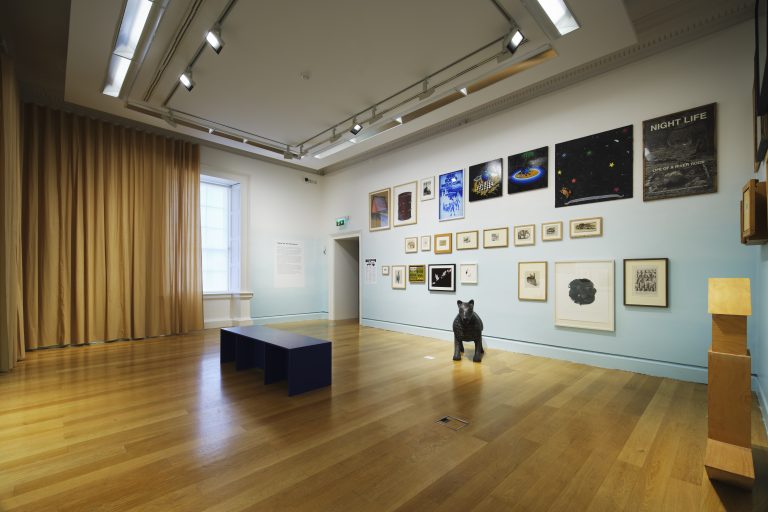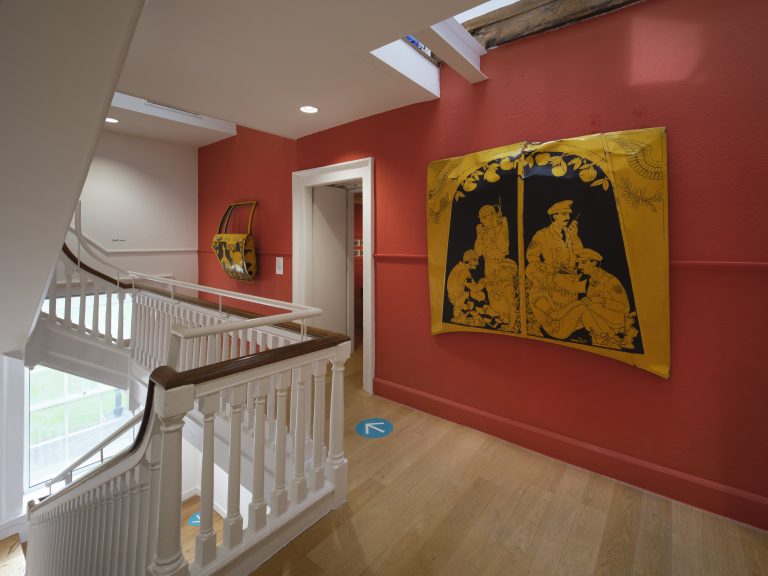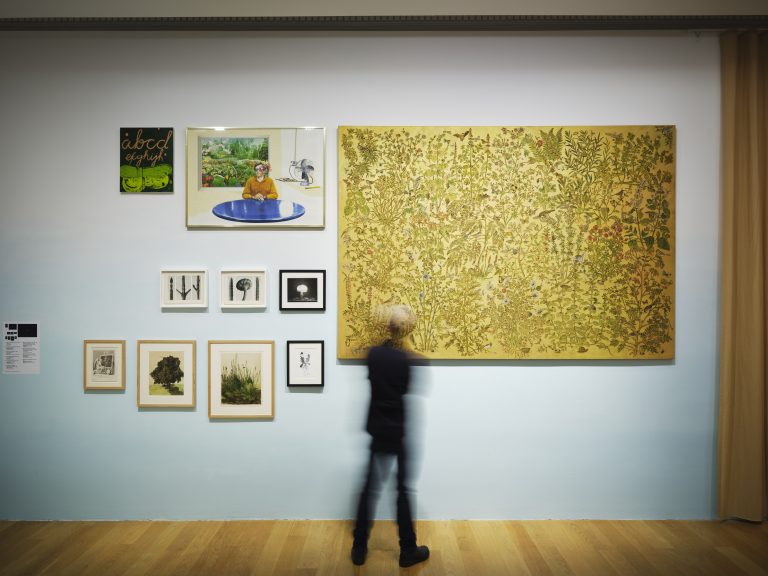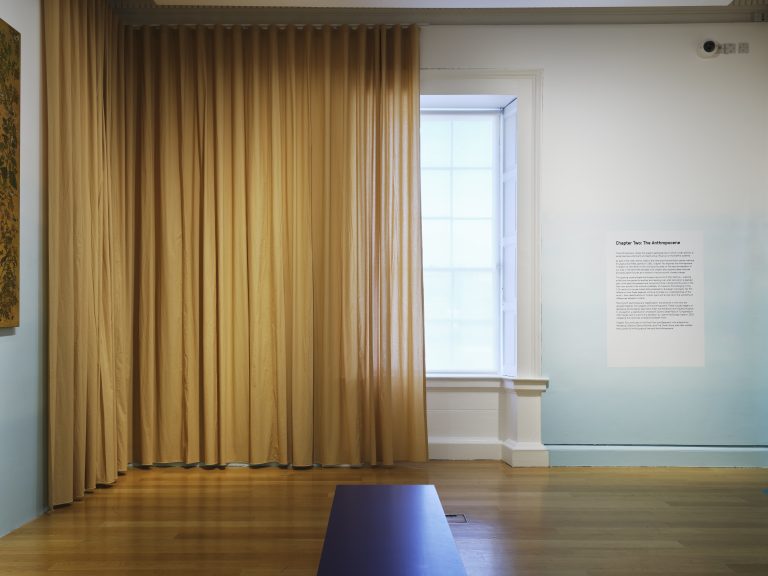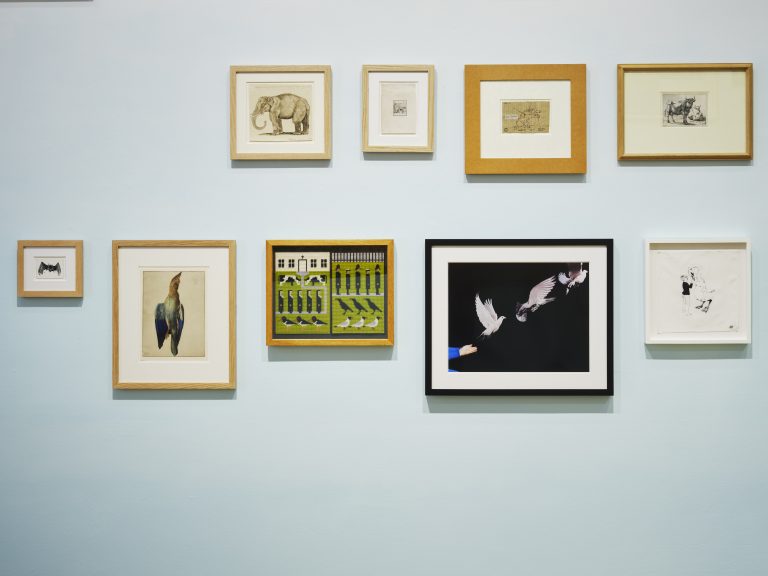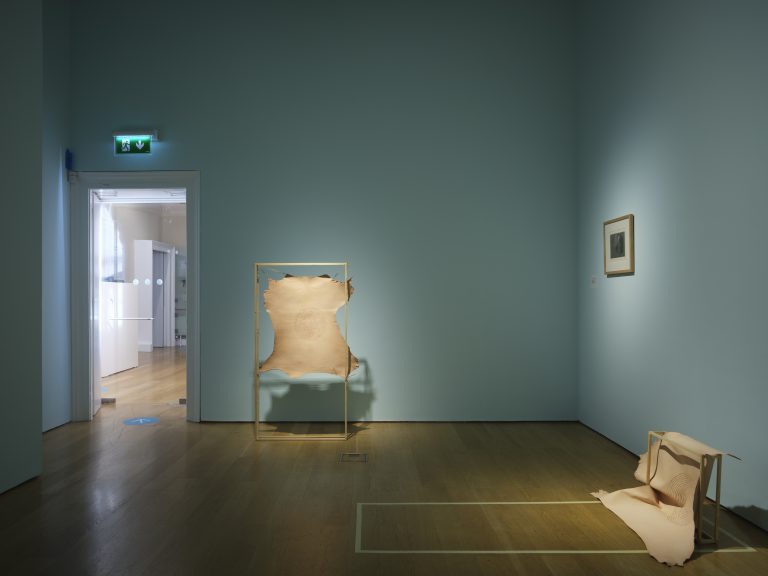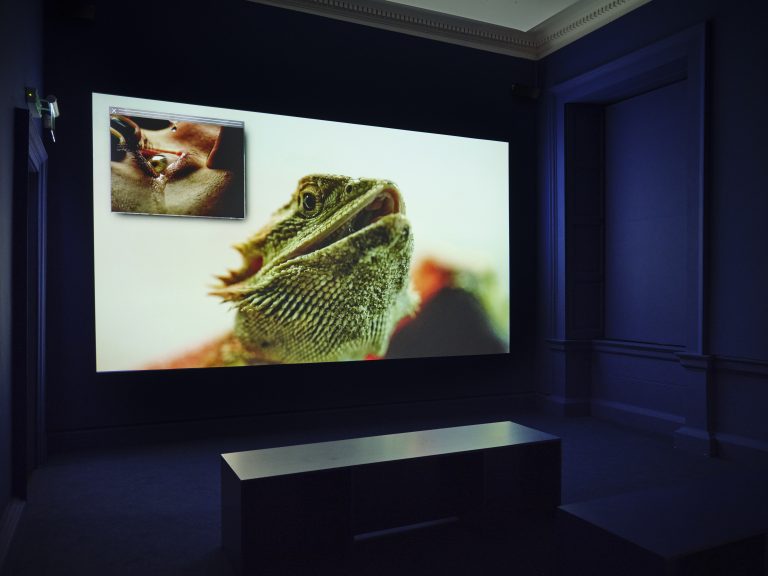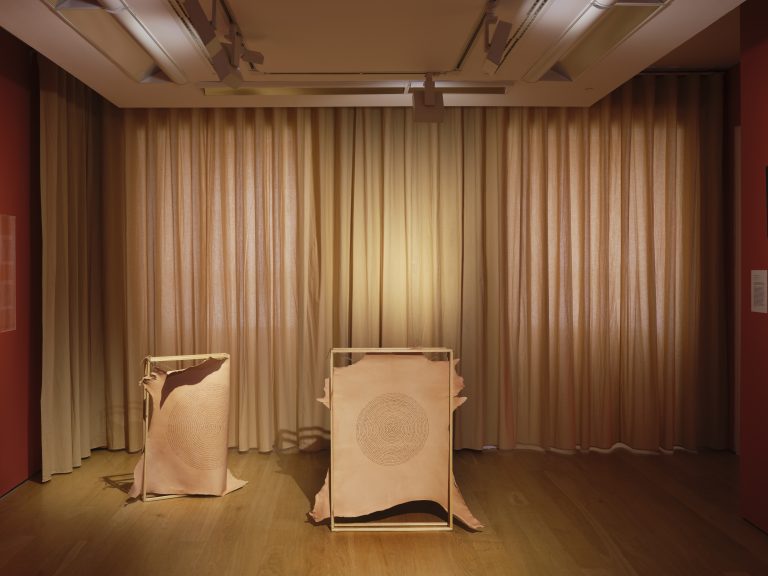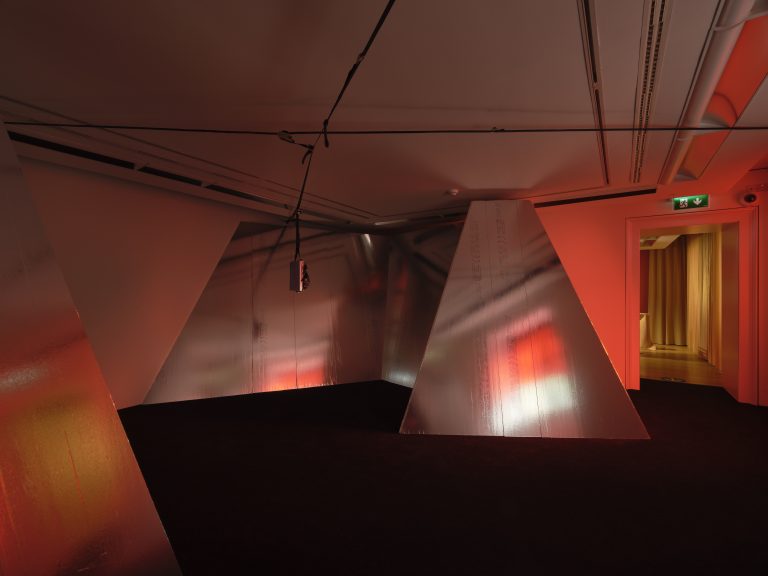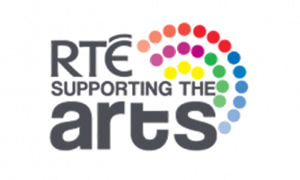The Narrow Gate of the Here-and-Now traces urgent themes across a 30-year period as they impact the personal, the political and the planetary, and prompts thinking about the effects of globalisation today in the Irish context as we respond to global crises from COVID-19 to Climate Change and the Black Lives Matter movement. The exhibition explores ideas of bodily autonomy, conflict and protest, the Anthropocene era, and digital technologies, through the rich holdings of the IMMA Collection and Archive which represent a diverse history of artistic responses to these themes.
The second chapter, The Anthropocene, considers the present geological era in which human activity has become visible as a dominant and destructive influence on the Earth’s systems. Expanding on the media’s focus on rising sea levels, heat waves and species extinction, it points to the multiple temporalities of the Anthropocene. While on the one hand focused on the rapid acceleration of our lives in the last three decades, chapter two also explores deep histories and speculative futures at a moment of reckoning with climate change.
The exhibition begins by looking at the colonial origins of the Museum and how its legacies continue to shape understandings of the world around us – from the classification of mineral, plant and animal life to the upholding of differences between humans. Facsimile prints of Albrecht Dürer’s meticulous botanical paintings from the 16th century hang next to more recent works by Breda Lynch and Nevan Lahart, exposing different lifetimes within the Museum collection.
The works in this chapter all deal with time in different ways. Some, including by Karrabing Collective, Frank Sweeney and Edy Fung, point to specific moments in history – from World War II to the Y2K Millennium Bug and the 2003 SARS outbreak. Others explore deep time, with Dennis McNulty’s sonic installation, which references a 1930 sci-fi novel, plotting a timeline spanning billions of years from ‘Earth Formed’ to ‘Second Solar Catastrophe’. While prints by Katie Paterson and, Leanne McDonagh propel fictions tied to the natural world into futures as yet unknown.
